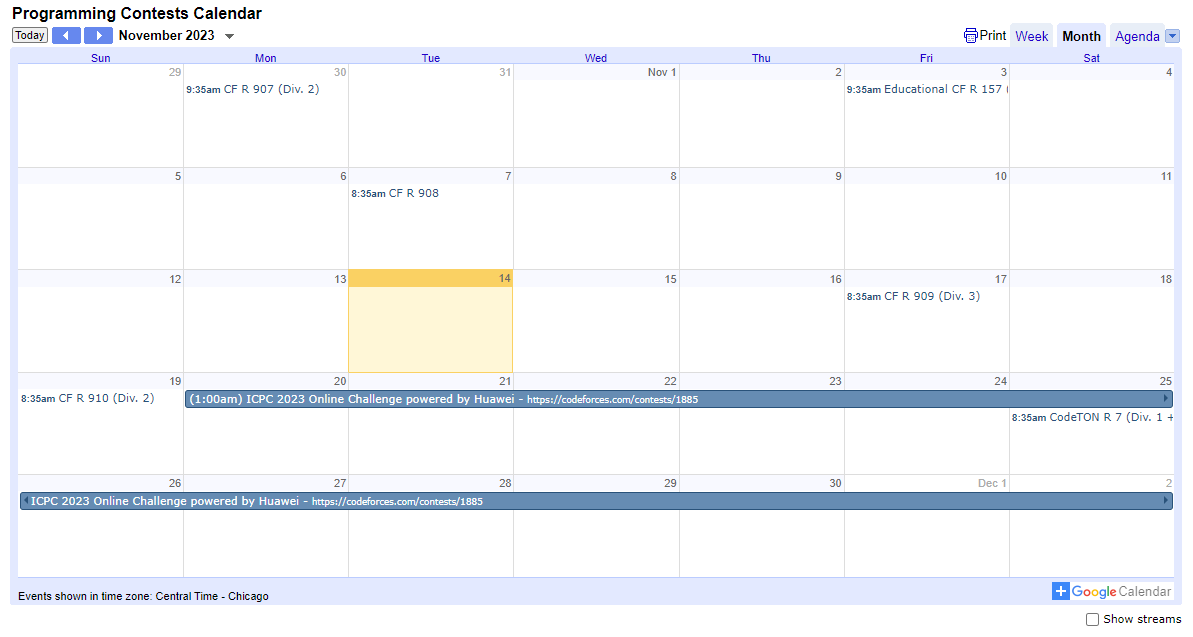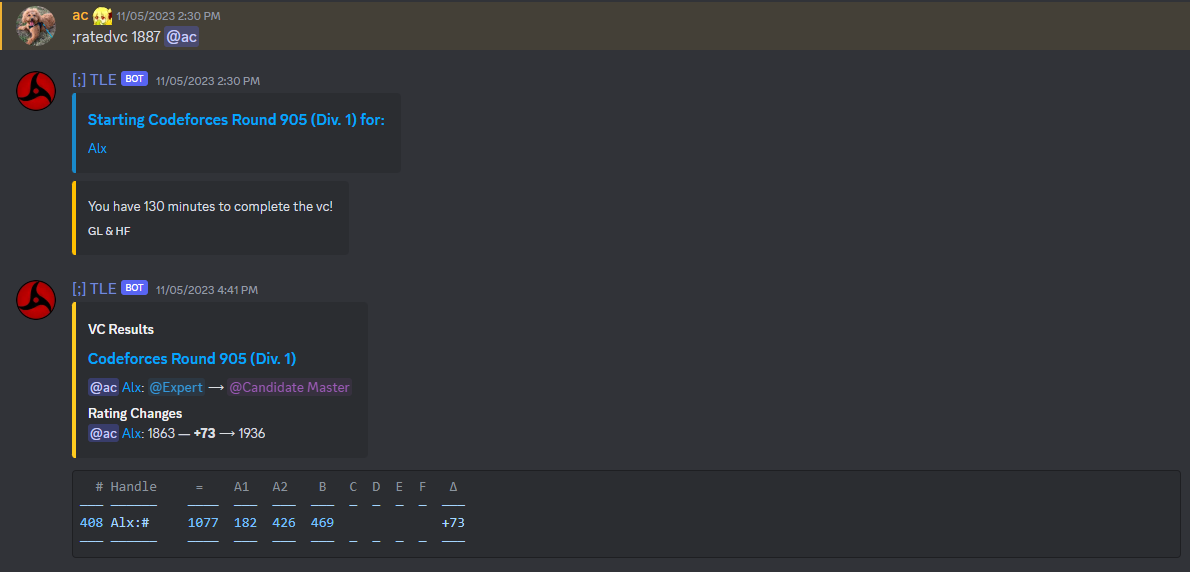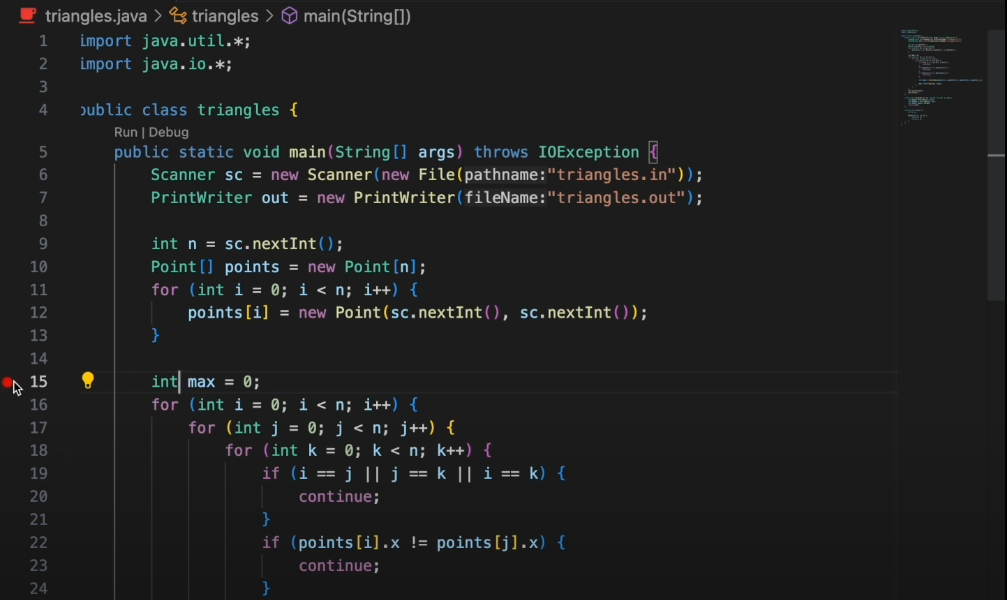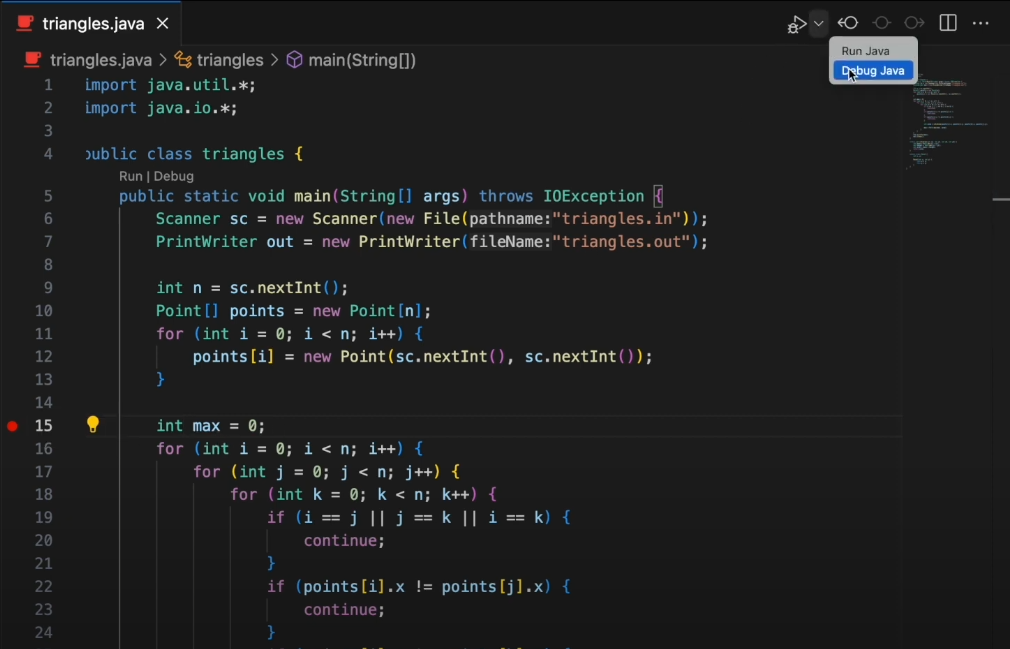In competitive programming, the success of a programmer hinges crucially on their ability to observe and analyze problems. This observational phase is a critical yet often undervalued aspect of problem-solving, forming the bedrock upon which efficient solutions are built. It involves not just a superficial understanding of the problem statement, but a deeper analysis of its nuances and underlying patterns. Effective observation can mean the difference between identifying the most suitable algorithms and approaches, or missing out on key insights that could lead to optimal solutions.
Furthermore, the skill of observation extends to recognizing potential pitfalls, understanding constraints, and predicting the behavior of different approaches. This comprehensive strategy not only aids in tailoring solutions more precisely but also in anticipating challenges. For aspiring competitive programmers, refining observational skills is thus as vital as enhancing coding abilities, as it significantly influences the journey from problem understanding to solution implementation. Today, I’ll discuss some tips that can help speed up your observation phase.
Time Complexity and Constraints
The key to unlocking the most efficient solutions lies in a keen understanding and analysis of the problem's constraints. Constraints are not just arbitrary numbers; they are critical clues pointing towards the nature of the expected solution. The first and most important tip I can offer is to pay close attention to these constraints. They reveal much about the problem, guiding you towards specific approaches and techniques.
It's essential to remember that problem setters design these constraints deliberately. They typically provide just enough time for an optimally efficient solution, with few exceptions. For example, older USACO problems sometimes presented the same problems in higher divisions as in lower ones but with increased limits. In such cases, the time allowed may be more generous than necessary. However, in most scenarios, it’s crucial to work within the strict confines of these constraints.
Here’s a detailed strategy to fully harness the power of problem constraints:
Document Every Constraint: Start by systematically noting down every constraint applied to each variable. This includes constraints on the number of elements, the range of values these elements can take, and any specific limitations like the values of coordinates. Understanding these constraints helps in framing a precise and efficient approach to the problem.
Focus on Small Limits: Small limits often hold significant implications. For instance, if you encounter a problem where N = 10^5 and K = 10, it's a strong hint towards a solution with O(NK) or O(NK^2) complexity. Small limits like these are an invitation to creatively nest loops and explore solutions that might otherwise be deemed too complex or inefficient.
Don’t Overlook Large Limits: Conversely, large limits also carry their own messages. A limit as high as 10^18, for example, suggests that logarithmic approaches might be necessary. Such large numbers typically require strategies that reduce the computational load, such as utilizing logarithms to manage these limits effectively. For example, in the problem Searching For Soulmates, (spoilers) it’s easy to assume that an O(1) solution is necessary, since the constraints are so large, however, this is not necessarily the case.
Let’s dive into some specific limits and what they could imply:
N = 1e5, 2e5, 5e5, etc: This range of limits, while offering minimal direct guidance, still tells us something important. It essentially rules out any solution that would involve nested iterations through N due to time constraints. This nudges us towards considering algorithms that operate linearly or include some logarithmic components. If these are coupled with smaller limits, it opens up possibilities to nest loops with N and the smaller limits, prompting thoughts towards such combined approaches. Here, the concept of amortization, which involves spreading out computational costs, becomes extremely relevant; also think about scenarios where loops of N can be nested, but through smart amortization, the overall complexity remains O(N).
N = 5,000 - 7,500: This is a distinct and telling limit. It essentially warns against attempting algorithms with O(N^2 log N) complexity, as they are likely to cause timeouts. Instead, the focus should shift to O(N^2) algorithms. Here, the aim is to find solutions that involve iterating through N twice in nested loops, without incorporating additional logarithmic factors.
N = 1,000 - 2,000: In this range, while logarithmic factors such as sorting or binary search are possible, they aren't always necessary. Your algorithmic considerations can include but aren't limited to, methods that incorporate log N factors.
N = 500: Like the 5,000 - 7,500 range, this limit also suggests an O(N^3) approach. Solutions here should ideally be tailored to fit precisely within this complexity range.
N = 200: At this level, you are likely looking at either O(N^3) or O(N^3 log N) algorithms. This is a nuanced distinction but an important one in terms of the complexity you can afford in your solution.
N = 20: This specific limit often indicates the use of bit manipulation, with bitmasking being a prevalent technique. For higher levels like gold and above, this usually translates into bitmask dynamic programming. For lower levels like silver and bronze, it often means iterating over all subsets.
N = 10: Though not as common, this constraint typically implies solutions involving permutations of elements.
In sum, a nuanced understanding and interpretation of constraints in competitive programming is not just beneficial; it's essential. These constraints guide you towards the most appropriate and efficient algorithms and techniques for a given problem. By tailoring your approach based on these constraints, you can develop solutions that are not only effective but also elegantly aligned with the problem's requirements.
Forced/Optimal Actions in Problem-Solving
An invaluable strategy is to focus on identifying 'forced' actions within a problem. These are actions or steps that you are compelled to take, given the constraints and nature of the problem. They represent truths or necessities that are unchangeable within the context of the problem. By recognizing these forced actions, you establish a robust foundation for further observations and analysis. This approach not only simplifies complex problems but also streamlines the path to finding a solution.
To better grasp this concept, let's delve into an illustrative example. Imagine a scenario where you have an array of positive integers, and your goal is to reduce every element in the array to zero. The only operation available to you is to decrement two adjacent elements by one, and you can repeat this operation as many times as necessary.
At first glance, the problem might seem daunting, with multiple potential starting points for operations. However, upon closer examination, you realize there are 'forced' operations. Consider the leftmost integer in the array, let's say it's 'x'. You are inevitably required to apply the operation to the first two integers 'x' times to reduce the leftmost integer to zero. This is a forced action – one without which the leftmost element can never become zero. Recognizing this forced operation is pivotal. It leads to the realization that all subsequent operations are similarly 'forced', aimed at continually reducing the leftmost non-zero element to zero. By identifying this pattern of forced actions, you effectively outline the entire solution methodology for the problem.
Optimal Actions: A Variant of Forced Actions
Another angle to consider is identifying actions that are 'optimal', which is a common variation in problem-solving. These are actions that, while not strictly forced by the problem's constraints, represent the most efficient path to a solution.
Let’s again take the example of the "Searching For Soulmates" problem. The following content will spoil the problem, so if you have not solved it yet and desire to do so on your own, I recommend skipping past this next part.
Focus on the division operation. It becomes evident that it is always optimal to add at most once before each division. Adding more than once is less efficient as it could be replaced with a more optimal sequence: adding less and dividing earlier. For instance, a sequence like "+ + /" is more effectively executed as “/ +”.
In essence, you are 'forced' to add either 0 or 1 times before a division because it is never optimal to add more. This insight significantly narrows down the range of possible action sequences, guiding you closer to the correct solution. Recognizing these optimal actions is about understanding the inherent efficiency of certain steps within the problem's framework.
In conclusion, focusing on forced and optimal actions in problem-solving is a powerful strategy in competitive programming. It simplifies complex problems by highlighting necessary or highly efficient steps. This approach not only aids in establishing a clear direction for solving problems but also enhances the overall efficiency and effectiveness of the solution. By mastering the art of identifying these actions, you can significantly improve your problem-solving skills and performance in competitive programming.
The Vital Role of Best/Worst Case Analysis in Competitive Programming
A critical and often game-changing approach is the analysis of best and worst-case scenarios for any given problem. This method is particularly effective in problems where the objective is to derive the best possible outcome. In fact, there are a lot of problems (even in USACO) where the best or worst case solution is actually the answer to the entire problem! Delving into the best and worst cases not only provides a starting point for your problem-solving journey but also offers a framework within which you can examine how the actual solution may deviate from these extremes.
Take, for instance, this problem from Codeforces. You are presented with two lists, A and B. The challenge is to insert elements from B into A, in any order and position, to minimize the Longest Increasing Subsequence (LIS) of the combined sequence. The LIS is the largest sequence of indices in an array where each element is larger than the preceding one.
First, like described, think about the worst case and best case. Here, the worst case isn’t very relevant. However, the best case answer for this problem is that the shortest LIS of any combined sequence is equal to the LIS of A, or in other words, the answer is at least equal to the length of the LIS of A. This is because, since A is always a subsequence of the combined sequence, thus making any increasing subsequence in A available as an increasing subsequence of the final sequence as well.
It turns out that you can always achieve the best case by inserting the elements of B into A in a certain order, and the first step to noticing this is thinking about the best case in the first place. For more details on the problem or how the solution works, feel free to check out the problem and the editorial itself.
Furthermore, it's crucial to note that the best/worst-case scenario analysis doesn't just apply to the final solution but can also relate to the resources or steps required in solving the problem. This is exemplified in the “Closest Cow Wins” USACO Silver problem. Once again, if you wish to solve the problem by yourself, I’d advise you to skip this next part, as I will give major spoilers.
Now, the question you should ask yourself is, what is the worst case on the number of cows Farmer John must use to get ALL patches of grass? Is it always equal to placing one cow on each patch of grass? Can we do better?
It turns out that we need at most 2M cows, as we can place 2 cows to surround each of Farmer Nhoj’s cows, which is the main observation for the problem. This highlights how analyzing the worst-case scenario in terms of resources needed can lead to crucial breakthroughs.
In summary, the analysis of best and worst-case scenarios is not just beneficial but often essential. This technique simplifies complex challenges and is key to identifying the most efficient and effective solutions. By examining these scenarios, programmers can gain a deeper insight into the intricacies of a problem, thus guiding them towards a more targeted and successful problem-solving strategy.
Observation Starting Points
When you begin to tackle a problem, there are several critical questions and considerations that can guide your thought process. These starting points can help you unravel the problem more efficiently.
Correctness and Solution Strategy:
Greedy Algorithm Feasibility: Start by asking whether a greedy algorithm is applicable. What aspects of the problem make it suitable for a greedy approach? Prioritize understanding what to choose or optimize at each step. If a greedy solution isn't feasible, identify the scenarios where it fails. This understanding can guide you towards constructing a more robust solution that accounts for these failures.
Forced and Optimal Actions: Consider if there are any forced actions or clearly optimal paths that make other options irrelevant. Identify if there are must-do steps, such as addressing a specific edge case or a particular sequence of actions that seems unavoidable.
Dynamic Programming (For Advanced Levels): For higher difficulty levels, contemplate whether dynamic programming (DP) is suitable. Assess if the time and memory complexity are manageable for maintaining all necessary states. Determine what states are crucial for the DP solution.
Sorting and Order of Elements: Evaluate whether sorting the elements could simplify the problem. Sometimes, the order of elements plays a crucial role, and sorting can bring clarity or make the problem more approachable.
Graph Construction and Data Structures: Think about the possibility of constructing a graph or other data structures using the problem's elements. Organizing the components into a different structure can often provide new insights and simplify the problem.
Time Complexity and Optimization:
Naive Solution Analysis: Identify the most naive solution first. This step provides a baseline from which you can work to optimize. Question immediately if there are apparent ways to enhance this basic solution.
Amortization Opportunities: Look for situations where amortization might be applicable. There may be processes that seem time-consuming at first glance but are actually feasible when their cost is spread out over the course of the algorithm.
Eliminating Time-Intensive Approaches: Recognize solutions that will definitely not run within the time constraints. Decide whether these approaches can be completely ruled out or if they can be optimized to fit within the time limits.
Interpreting Constraints for Time Complexity: Analyze the problem's constraints to determine the viable complexity of your solution. Look for small limits or combinations of limits that suggest a certain range of complexity, typically around 1e7 to 1e8 operations.
By addressing these points when starting a problem, you can form a structured approach to making observations. This process not only aids in understanding the problem better but also in devising an efficient strategy for solving it. Keep in mind that the key to successful problem-solving in competitive programming often lies in these initial observations and the strategy that stems from them.
How to use observations effectively
Once you've made key observations in a problem, the next crucial step is leveraging these observations to guide you towards the correct solution. Observations are powerful tools, but their true value is realized only when you know how to effectively use them.
Simplifying the Problem with Observations
The primary benefit of making astute observations is their ability to strip down a problem to its essence, removing extraneous details. This process of simplification is often the turning point in problem-solving. Take, for instance, a complex-looking problem from Codeforces. At first glance, the problem might appear daunting due to its length and intricate details. However, with the pivotal observation that the optimal choice is a weight exactly equal to Polycarp’s strength, the problem transforms. It becomes a much simpler task: to find the athlete with the maximum endurance and sufficient strength. By using observations to pare down the problem, you can discard irrelevant information and focus on the crux of the challenge. Tackling this simplified version is usually far less daunting and leads to the solution more efficiently. So, after making crucial observations, consider whether the problem can be reduced to something simpler and more manageable.
Reducing the Range of Possibilities
Observations, particularly those related to forced or optimal actions, can drastically narrow down the range of possible solutions. This reduction allows for a more rapid and focused exploration of potential solutions. Refer back to the earlier example of the “Searching for Soulmates” problem. The observation made in this problem significantly reduced the possible sequences of operations, facilitating a quicker discovery of the optimal sequence. In general, once you have observations that limit the possibilities, repeat this analytical process on the reduced set of possibilities. Investigate whether there's more to deduce, further refining your approach.
Continuous Observation: The Never-Ending Cycle
Observations in problem-solving are not a one-off task but a continuous, iterative process. Many problems, particularly ad-hoc and constructive types, are almost entirely based on making a series of observations. To solve these, one must continuously observe, analyze, and deduce, building on each observation to get closer to the solution. Consider whether your initial observation can be applied to other aspects of the problem, or if it can be generalized to encompass broader scenarios. Treat each observation as a stepping stone, and view the simplified version of the problem as a new challenge. This continuous cycle of observation and analysis is crucial. It's through this iterative process that you edge closer to the right answer, regardless of the problem’s complexity.
Conclusion
Observations act as a beacon, guiding programmers through the often murky waters of competitive problem-solving. They help in simplifying problems, reducing the range of possibilities, and continuously steering thoughts towards the most effective solution. As we have discussed, whether it's deducing the implications of time complexity and constraints, exploiting the best and worst-case scenarios, or using observations to iteratively refine the problem-solving approach, each aspect underscores the same principle: keen observation is the key to unlocking the full potential of your problem-solving skills.
In conclusion, for those journeying through the competitive programming landscape, the message is clear: cultivate and refine your observational skills. Embrace the practice of looking beyond the obvious, questioning the given, and exploring the implications of every detail. As you do so, you’ll find that your ability to dissect and conquer complex problems grows stronger, making you not just a better programmer, but a masterful problem solver.



























